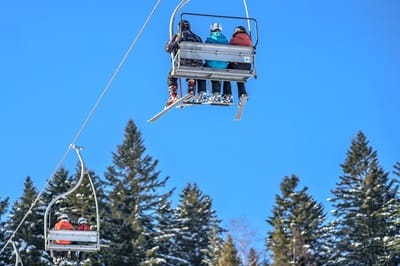Ski resorts may experience more variable and unpredictable snow conditions, affecting their ability to operate consistently. This affects regions dependent on winter sports and tourism which may face economic challenges including loss of jobs due to changing snow patterns and conditions.
Winter tourism stakeholders are increasingly recognizing the need for adaptation strategies. This includes investing in sustainable practices, diversifying tourism offerings, and developing year-round attractions to reduce dependency on winter-specific activities.
While the effects can vary regionally, some general trends and consequences of climate change on snow and consequently winter tourism include the following.
Changes in Snowfall Patterns
In some regions, rising temperatures can lead to a reduction in overall snowfall. Warmer air holds more moisture, leading to more rainfall than snowfall. Conversely, in certain areas, mgbanwe ihu igwe may cause more intense and concentrated snowfall events. This can lead to heavier snowfall over shorter periods, potentially resulting in issues such as snowstorms and avalanches. Both scenarios can severely impact regions dependent on winter activities to fill tourism coffers.
Altered Snow Melt Timing
Warmer temperatures can cause earlier and faster melting of snow, leading to shifts in the timing of snow melt. This can impact water availability downstream, affecting ecosystems and water resources.
Changes in Snow Cover Duration
Higher temperatures can shorten the duration of snow cover, impacting ecosystems, wildlife, and the water cycle. Reduced snow cover affects the reflectivity of the Earth’s surface, contributing to further warming. The shorter the snow season, the lesser income for winter tourism economies.
Shifts in Snow Lines and Elevations
Warming temperatures can cause the elevation at which snow occurs to rise. This can impact mountain ecosystems and the availability of water resources downstream. It also makes it nearly impossible to navigate how to get skiers up the slopes on lifts when the lift were constructed for snowfall at cooler Earth temperature levels.
Contribution to Sea Level Rise
Changes in snow and ice cover, particularly in mountainous regions, contribute to the melting of glaciers. The melt water from glaciers adds to sea-level rise, impacting coastal areas globally.
Increased Wildfire Risk
In some regions, decreased snow pack can contribute to drier conditions, raising the risk of wildfires during warmer months.
The specific impacts of climate change on snow can vary by region, and some areas may even experience increased snowfall in certain conditions. Overall, climate change is a complex phenomenon with diverse and interconnected effects on weather patterns and ecosystems. Adaptation and mitigation strategies are crucial to address the challenges posed by these changes.
IHE Ị GA-Ewepụ na edemede a:
- The specific impacts of climate change on snow can vary by region, and some areas may even experience increased snowfall in certain conditions.
- While the effects can vary regionally, some general trends and consequences of climate change on snow and consequently winter tourism include the following.
- It also makes it nearly impossible to navigate how to get skiers up the slopes on lifts when the lift were constructed for snowfall at cooler Earth temperature levels.























